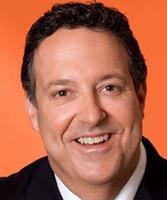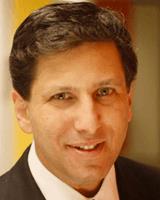mHealth Panel: Make Progress, Not Excuses

By Ed Miseta, Chief Editor, Clinical Leader

I recently moderated a couple panel discussions at the 2016 eyeforpharma Data Quality & Technology in Clinical Trials conference in Philadelphia. One of the panels was on a topic that continues to generate a lot of interest in the industry, which is the use of mobile and wearable technologies in clinical studies. While many sponsors continue to cite concerns over regulatory issues, other companies are moving forward with their adoption. But what are the main concerns companies face, and how can they be best overcome?
For this panel, I was able to bring together three experts in the area of mHealth: Rob DiCicco, VP of Clinical Innovation and Digital Platforms at GSK; Craig Lipset, Head of Clinical Innovation at Pfizer; and Kara Dennis, Managing Director of mHealth for Medidata Solutions.
Ed Miseta: Are there still regulatory concerns around implementing mHealth technologies?
 Rob DiCicco: If we are not able to de-mystify this within our own companies, then the regulatory agencies are not going to do it for us. But I also believe we don’t need to make it more complicated than it is. Mobile health, wearables, applications, and devices are just additional tools we have for conducting clinical trials. They are very powerful tools, but they are still just tools that allow us to collect data and make needed medicines better and gather data faster than we have in the past.
Rob DiCicco: If we are not able to de-mystify this within our own companies, then the regulatory agencies are not going to do it for us. But I also believe we don’t need to make it more complicated than it is. Mobile health, wearables, applications, and devices are just additional tools we have for conducting clinical trials. They are very powerful tools, but they are still just tools that allow us to collect data and make needed medicines better and gather data faster than we have in the past.
Having said that, I think the agencies have been pretty clear in their draft guidance and in presentations they have made at conferences. We are accessing patients differently, and they will certainly be looking at things like clinical plausibility, benefit to the patient, and what is important to patients.
 Craig Lipset: Any organization that is sitting back and waiting for the FDA to de-mystify this space on their behalf will be woefully behind their peers. Regulators in general have frameworks in place for companies to incorporate. There are qualification processes for drug development tools. There is guidance regarding tools that companies want to incorporate in new and different ways. That guidance may not fill every gap, and there may be niche areas that companies may have to interpret, but there are frameworks to do that and pathways are available.
Craig Lipset: Any organization that is sitting back and waiting for the FDA to de-mystify this space on their behalf will be woefully behind their peers. Regulators in general have frameworks in place for companies to incorporate. There are qualification processes for drug development tools. There is guidance regarding tools that companies want to incorporate in new and different ways. That guidance may not fill every gap, and there may be niche areas that companies may have to interpret, but there are frameworks to do that and pathways are available.
I think the challenge that will likely still persist relates to tracking guidance on a global basis. For example, the FTC working with HHS recently put out a tool on their website to help companies figure out if their mobile or digital tool qualifies as a medical device. Of course, if you are running a trial globally, trying to track those rules and regulations on a global basis will continue to be a challenge. I think it will be a long time before we see international harmonization around what constitutes a medical device on a country-by-country basis.
 Kara Dennis: It’s very interesting to hear those two responses because in the majority of conversations I have with companies there is a lot of trepidation about pursuing these types of trials, based on a lack of certainty about the position of regulatory agencies. I was glad to hear Rob and Craig refer to sponsor companies taking a leadership position in terms of making determinations about reasonable approaches for implementing these types of trials.
Kara Dennis: It’s very interesting to hear those two responses because in the majority of conversations I have with companies there is a lot of trepidation about pursuing these types of trials, based on a lack of certainty about the position of regulatory agencies. I was glad to hear Rob and Craig refer to sponsor companies taking a leadership position in terms of making determinations about reasonable approaches for implementing these types of trials.
For many of the companies I speak to, the concerns revolve around regulators not telling them which specific devices, tools, and methodologies can be implemented. Since there have not been clear proclamations about those things, there is some fear. But, I agree that there have been volumes of documentation produced that shares reasonable approaches for implementation. I also tell companies that regulatory agencies, particularly the FDA, have been very clear about having an open dialogue on mHealth trials even if they are not telling companies the specific devices to use and how to use them.
Miseta: Aside from regulatory issues, what are some of the other concerns sponsors have?
DiCicco: There are certainly some practical concerns that exist, such as getting data off the devices in a meaningful way. There are different interfaces out there, which can be an issue to a company that has already committed to one platform which may not accommodate different types of eSource data. Data integrity and data privacy are also concerns that need to be addressed. But, although these are legitimate concerns, we can’t afford to sit around all day making up excuses to not do something. There will always be barriers that exist. What we need to do is press forward.
What we all need to do is start thinking early on in the development process how some of these tools might help you answer questions. Then you would be well positioned to decide whether or not it makes sense for you to pursue in your registration trials.
Lipset: Although I do not believe there are insurmountable regulatory barriers standing in the way of mHealth adoption, that should not be construed to mean we are at rich, full, adoption and implementation and utilization of these tools. To Rob’s point, plenty of incremental challenges still remain, just as there would be for any new marker or digital measure you might want to introduce to a study. There will be challenges, just not insurmountable barriers. And at this point the challenges seem to be more cultural than technical in nature.
Dennis: I’m glad Craig mentioned that because the cultural point is a very interesting one. There are challenges that on their own are not insurmountable, but because there might be numerous issues to work through, companies can become frustrated. It will always be easy to keep doing things the old way, since incorporating new processes will always require new knowledge, training, and expertise.
I like to tell clients that before they even get to some of the regulatory questions, that they try and address some of the more basic implementation challenges. There are also questions companies are working through in terms of data quality. For example, whether the data coming in from the app, sensor, or wearable is of sufficient quality for you to determine something clinically meaningful about the subject.
Miseta: Within a large pharma company, is it difficult to get a new device or sensor approved for a trial?
DiCicco: If you start with the device, you will find yourself going door-to-door to different project teams trying to get them to participate in a pilot. That’s the wrong approach. I think it really starts with trying to articulate a clear strategy of how you want to move forward and then aligning your top executives to that strategy.
Our approach at GSK involves creating real clarity around a handful of clear and present R&D problems that different technologies can map to (i.e., sensors, wearables, eConsent, eAdherance, social media applications). It is much easier for people to align around an agreed R&D problem than a specific sensor or technology.
Sensors are also a lot like the cell phone you currently own. You can select the best one today, but by the time you finish your study there will be a better one available. Therefore, it is much more important to focus on the right infrastructure, the right software, and understanding what to do with the data being generated. That will put you in a much better position to manage the risks.
I would also mention the importance of working backwards from the patient. These new technologies should allow you to get to patients you otherwise would not be able to access because of the burden of getting involved in a clinical trial. Implementing new technologies becomes easier when you can demonstrate how they allow you to do things you otherwise couldn’t.
Finally, I would add that at some point in the future, the ecosystem in which we do clinical trials today will cease to exist. As healthcare becomes more consumer focused, the idea that someone would make frequent visits to a clinic an hour away for a 15-minute visit will vanish before our eyes. Patients will soon be able to be treated at home, get prescriptions at home, and do a tele-visit with a doctor from home.
Lipset: I completely agree with Rob on that point. We shouldn’t get too enamored with the new technologies coming to market. What sponsors need to do is start with the challenges and the problems they face, determine what exactly they want to measure, and work from that direction.
In a large company like Pfizer, we are fortunate to be able to pull together diverse resources from across our organization and dedicate a portion of its attention to this mobile space. We call them our mClinical Team, and we bring them into these opportunities when appropriate. These individuals could be clinicians with backgrounds that cross over into physics or engineering, as well as individuals in operations, legal, regulatory, and other key areas. These folks are already familiar with many of the devices on the market, so when a new one comes along they do not have to go back and start from square one. They are able to understand what is incrementally different.
Dennis: I would just add one observation. When I have seen life science companies move the fastest and with the most urgency on mobile trials, it’s because the problem is so pressing. For example, one clinical team I worked with was concerned about its ability to recruit the patient population needed for a burdensome trial. It was looking for ways to make that trial easier for patients in order to simplify the recruitment process. Another clinical team felt it could not even move into early-phase clinical trials because it did not have enough good information about the patient population. The team felt exploratory work via a mobile app would be the only way to gather the needed information.
Those are the types of problems I have seen that give companies the drive they need to push through obstacles. I have yet to see a trial work perfectly and seamlessly from end-to-end, but if there is a pressing problem and some urgency around it, you can remove a lot of those barriers. There will always be issues that arise. Companies just need to have a champion in place who is willing to persevere.
Miseta: I’m sure some sponsors are concerned about how to combine data coming in from mobile devices with clinical operations data obtained from other sources. Would anyone care to address that?
Lipset: At Pfizer, we simply look at it as another electronic source of data, similar to how we might consider lab data or ePRO data. Granted, the nature of many contemporary wearables makes this a slightly different challenge. For example, if you want accelerometer data on multiple axes, that will be a much higher fidelity data stream that your data infrastructure will have to account for.
We have had to make investments in our data infrastructure and architecture to accommodate that new reality. This is not only around streaming wearables, but just the diversity of source data that we capture today.
DiCicco: I think that’s a fair question. But as an industry, we have done this before. If we needed to capture tissue biomarker data that was typically done by a lab and did not fit with our EDC system, we would figure out how to do it. We will always need to be able to evolve solutions as we move forward, and that is true of mHealth tools just like it is for other new technologies. Even if we never put another wearable into a study, the problem of evolving technologies would not go away.
Dennis: At Medidata, this is the kind of problem we deal with every day. In a trial, you can get many different types of data. The bigger problem is really figuring out what data you want and whether it is telling you something clinically meaningful. Then, in order to get data into the cloud, it first has to be synced into a hub. Many of the devices we work with do not sync data automatically. However, it’s an area where we are seeing a lot of progress. But it is also an area in which companies might struggle when implementing one of these trials.
